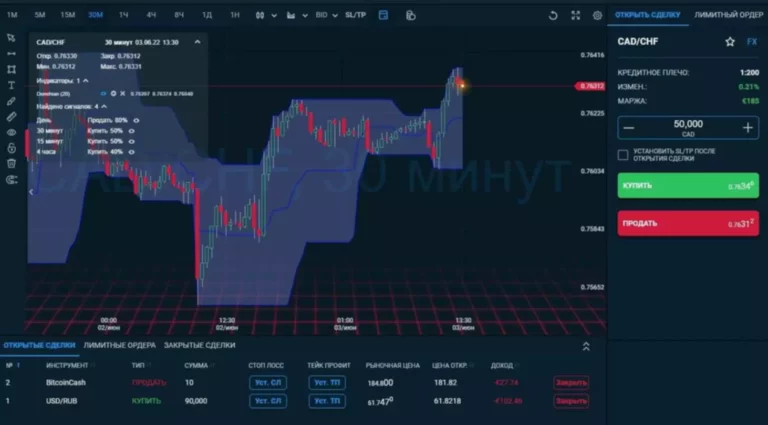Content
For example, they may https://www.xcritical.com/ be willing to lose 5% but will take profit if they make 15%. Traders and investors are both looking to make a profit on the risk they are taking, but how they measure risk and reward may differ. Day traders place multiple trades each day, while swing traders may place multiple trades in a week or a month. Position traders, on the other hand, may take a few trades every few months or more. How you choose your strategy may be more important than the strategy itself. Indeed, any of these strategies can generate a significant return if the investor makes a choice and commits to it.
- Trading and investing are two core approaches to growing wealth, but they differ significantly in strategy, goals, and timeframes.
- In most cases, the trading vs. investing shouldn’t be a binary decision.
- He focuses on identifying undervalued companies with strong fundamentals, consistent earnings, and competitive advantages (which he calls “economic moats”).
- If they’re high enough, they can offset and even beat out inflation, helping you build wealth.
- Fidelity cannot guarantee that the information herein is accurate, complete, or timely.
- If your account loses 25%, you’ll need a 33% gain just to get back to even.
What fees should I look for when trading?
However, if your goal is to reduce risk, long-term investing is a safer choice. Portfolio representationDue to the amount of risk involved, trading typically only represents a percentage of someone’s total investments—not their entire portfolio. This allows them Proof of stake to take on riskier bets without jeopardizing their long-term financial futures. Remember these are long-term results, and you shouldn’t invest money you may need to cover immediate expenses in an effort to beat inflation. The stock market experiences many peaks and valleys over months and years. If you invest money you need to cover near-term costs, you may have to sell at a greater loss than inflation alone would have cost you.
Advantages of investing in stocks
Because most people invest for long-term goals, like buying a house, paying for college, or saving for retirement, they tend to hold these assets for a long time—meaning years, if not decades. Trading involves more frequent transactions, such as the buying and selling of stocks, commodities, currency pairs, or other instruments. The goal is to generate returns that outperform buy-and-hold investing. While investors may be content with annual returns of 10% to 15%, traders might seek a 10% return each month. For traders, the risks include the possibility of losing money due to market volatility and the need for quick decision-making. For investors, the risks include the possibility of losing money due to market downturns or the trading and investing difference investment not performing well.
How Does Risk Tolerance Affect an Investment Strategy?

One difference is that trading share CFDs won’t give you ownership of the shares in question, while share dealing will. But share CFDs do enable you to speculate on share prices rising by going long, as well as falling by going short. This isn’t available when investing in shares, but you can profit from upwards movements in a share’s price.
How to invest a lump sum of money
This allows traders to easily manage their trading activities with full-time jobs and other commitments. At one point in time, asset prices will move up while in other times, markets will fall. As a long term investor, you will not be in a good position to adapt to the market cycles. Wash sales can be difficult to track at some brokerage firms like Robinhood. Non-traditional investing platforms like SoFi and Robinhood also don’t permit the sale of specific investment lots. This means you can’t isolate shares to realize a loss to offset other gains or minimize a taxable gain.

People hoped that the company would continue with its innovative nature. However, when Apple came up with the iPhone, Nokia dismissed it saying that people would not shift to such phones. Today, Nokia as a mobile company does not exist, and its value has been washed away. A few years ago, Nokia was the world’s largest mobile phone developer. The company was so large that many ‘experts’ predicted that it would surpass Exxon Mobil as the biggest company in the world, and Billions of dollars were invested in the company. Our community is about connecting people through open and thoughtful conversations.
To the extent you have the interest and desire to pick stocks, only trade with an amount that won’t materially impact your financials if it fell to zero. Investors who bought GameStop stock on January 27th, 2021 would have lost nearly 55% of their investment by April 21st, 2021. If you bought GameStop just one day earlier, you’d actually have a 7% gain, vs. nearly 9% for the S&P 500. And buying the stock on January 1 and selling on January 27th would have produced an incredible 1,740% return vs the S&P which was essentially flat.
When deciding how to allocate your money between trading and investing, always keep your value at risk in mind. Ask yourself what you’re hoping to achieve and the impact on your financials if it doesn’t go as planned. Passive investing, on the other hand, is a hands-off strategy that relies on business performance to drive returns higher. Instead of simply buying or selling when the market fluctuates, they hold onto their stake. People often confuse investing and trading, using the terms interchangeably.
What matters to traders is which direction the stock will move next and how the trader can profit from that move. Investors generally follow a long-term investment time horizon to achieve their goals. This is usually more than one year as evidenced by the buy-and-hold strategy. The total length of time that an investor takes before they get their money back depends largely on their investment style or strategy and their goals.
This helps smooth out any dips individual companies may experience by supplementing their performance with other companies’ stronger returns. Traders often employ technical analysis tools, such as moving averages and stochastic oscillators, to find high-probability trading setups. Robinhood offers a library of educational articles and publishes a daily financial newsletter. While investors can access stocks, options, ETFs, cryptocurrency, fractional shares and even IPO shares, Robinhood doesn’t offer mutual funds or bonds. If you’re just starting out in trading stocks, avoiding day trading and considering longer-term stock trading strategies is best.
The trader pays a spread fee and overnight holding costs (excluding forward contracts) but can avoid management fees overall. Liquidity refers to how quickly and easily an asset can be bought or sold in the market without causing a significant price movement. Instead, currencies are traded electronically across a global network of banks, central banks, brokers, commercial companies, and traders.
To be an effective long-term investor, you need to do a few things. For instance, you need to have your views brought up in the company’s management. This can be done by being a member of the board of the company.
These are stocks that are strong fundamentally and growing, which means they may be good stocks to consider for long-term holds. That’s how I do it, but you can of course combine your trading and investing however you like. The amount of time you have is a factor to consider when deciding to become a trader or investor. Swing and position trading also require time spent each week or month to find suitable trades. The main difference between investing and trading is the time frame of the transactions.








